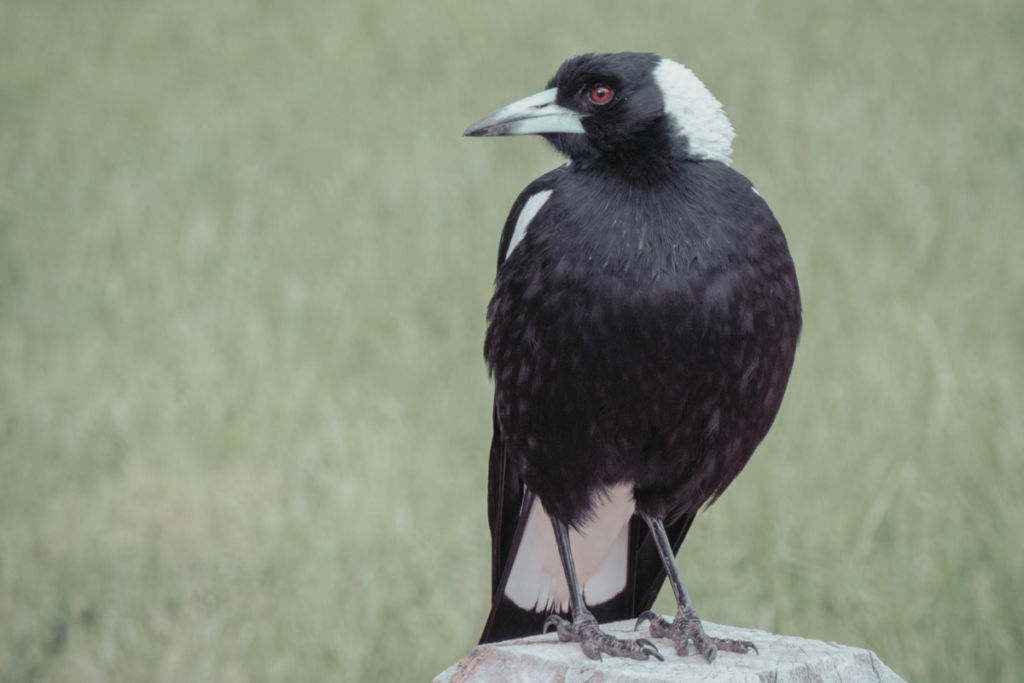

As the Australian spring gets underway, so does the infamous magpie swooping season, the time of year that leaves walkers, joggers, and cyclists nervously scanning the skies in fear of being attacked by one of the territorial birds.
It’s never fun to be on the receiving end of a magpie swoop and they can be pretty hard to avoid at times, so we’re taking a look at why magpies swoop, plus how to protect yourself can at least help minimise the chance of it occurring or the damage caused.
Why do magpies swoop?
Magpie swooping season coincides with their breeding period. Starting around mid-August, female magpies begin laying their eggs, and male magpies vigilantly guard their nests, perceiving potential threats from anyone passing too close—whether human or animal.
While only about 10 per cent of male magpies engage in swooping behaviour, for those who do, they can be particularly aggressive, targeting anything that ventures within a 50-100 metre radius of their nest.
Their protective instinct is nature’s way of ensuring their chicks survive until they are strong enough to fly, typically around late October.
For those who have experienced it, a magpie swooping can be genuinely terrifying. The rapid flutter of wings, followed by a sharp peck to the head or neck, can catch even the most prepared person off guard.
When is magpie swooping season in Australia? From August to November, male magpies – typically the swoopers – fiercely defend their nests, resulting in hundreds of attacks across the country annually.
Who is most at risk of magpie swooping?
Swooping incidents are especially common in suburban areas where magpies nest close to walking tracks, parks, and residential streets.
Cyclists often face the brunt of these attacks, as magpies tend to view fast-moving objects as a significant threat.
Reports on platforms like Magpie Alert, a community-driven site tracking swooping hotspots, highlight the unpredictability of attacks.
Recent updates on the site from members of the public include a Queensland cyclist describing being swooped twice, with one attack drawing blood.
Another walker recounted how large headphones and a hat saved them from serious injury during a morning stroll in Sydney.


Cyclist Shane miller captured the moment he was attacked by a magpie (Shane Miller)
How to protect yourself from a magpie swoop
While magpies are highly territorial, there are several effective ways to reduce your chances of being swooped.
Firstly, it’s essential to respect their space. Avoid known swooping areas or keep a wide berth of at least 50 metres from nesting sites.
Monitor sites like Magpie Alert as they provide up-to-date maps highlighting current swooping locations across the country.


Magpie myths and how to coexist safely
While magpies are often vilified during this season, it’s important to remember that their swooping behaviour is temporary and primarily motivated by their parental instincts.
As soon as their chicks have fledged, magpies generally revert to their more docile selves.
The best approach, according to experts, is to give them space and avoid demonising these iconic Australian birds.
Magpies play an important role in local ecosystems, helping to control pests and maintaining biodiversity .
Understanding that only a small percentage of magpies swoop and that their attacks are rarely life-threatening can help ease some of the anxiety that surrounds swooping season. And we know that there’s some people who have a genuine fear of being swooped!
By taking simple precautions and respecting their territory, it’s possible to enjoy the outdoors without fearing every flutter of wings.
Have you ever found yourself victim of a magpie swooping incident? If so, leave a comment below and tell us about your experience!
